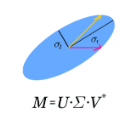Pediatric obstructive sleep apnea affects an estimated 1-5% of elementary-school aged children and can lead to other detrimental health problems. Swift diagnosis and treatment are critical to a child's growth and development, but the variability of symptoms and the complexity of the available data make this a challenge. We take a first step in streamlining the process by focusing on inexpensive data from questionnaires and craniofacial measurements. We apply correlation networks, the Mapper algorithm from topological data analysis, and singular value decomposition in a process of exploratory data analysis. We then apply a variety of supervised and unsupervised learning techniques from statistics, machine learning, and topology, ranging from support vector machines to Bayesian classifiers and manifold learning. Finally, we analyze the results of each of these methods and discuss the implications for a multi-data-sourced algorithm moving forward.
翻译:小儿阻塞性睡眠性脑膜炎影响约1-5%的小学学龄儿童,并可能导致其他有害健康问题。斯威夫特诊断和治疗对于儿童的成长和发展至关重要,但症状的多变性和现有数据的复杂性使这一问题成为挑战。我们在简化这一进程方面迈出了第一步,侧重于来自问卷和天窗测量的廉价数据。我们在探索性数据分析过程中应用了相关网络、来自地形数据分析的地图算法和单值分解。然后,我们应用了从统计、机器学习和地形学等统计、机器学习和地形学等各种受监督和不受监督的学习技术,从辅助矢量机到贝叶斯分类器和多重学习。最后,我们分析了这些方法的每一项结果,并讨论了对多数据源算法向前发展的影响。





